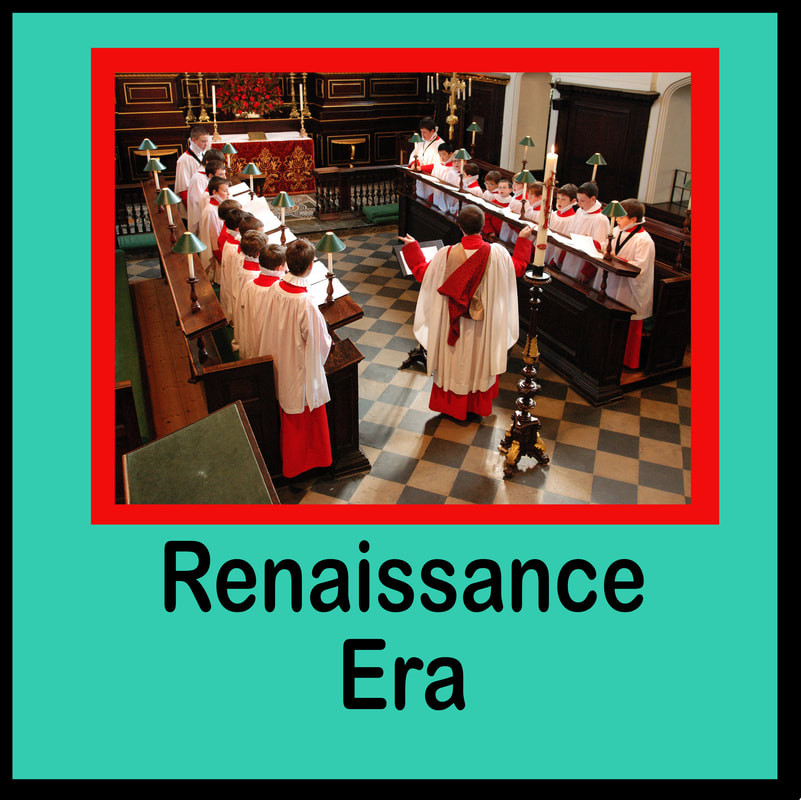Renaissance Music EraThe Renaissance era, was a time when science, art, and music flourished. In music, many important changes happened. Intervals of thirds and sixths were treated as consonances (nice sounding harmonies). During the middle ages they had been seen as dissonant (harsh sounding harmonies) and the perfect intervals were consonant. This gave Medieval music a "hallow" sound and Renaissance music a more "lush" sound.
Polyphony is when two or more melodies are played at the same time. During the Renaissance era, this started to get more complicated and rules began to solidify for composing certain harmonies. |
Invention of the Printing Press
Music had to be hand copied until the printing press was invented in 1439. The printing press made it cheaper and easier to make many copies of music and get them to musicians to play. Now, rich musicians could play music at their house for fun.
Renaissance Music Forms
Masses and motets were popular religious music forms during the Renaissance era. German lied is vocal music accompanied by an instrument. This became a popular form of music along with the madrigal, frottola, and the chanson. At the end of the 16th century, the opera was born. "Dafne" by Jacopo Peri and Jacopo Corsi with a libretto (lyrics) by Ottavio Rinuccini is considered the first opera. It was written in 1589 and had acting, singing, and music all together. The composers were trying to imitate Greek music, but ended up making something new. Many of the first opera subjects were about Greek mythological characters because they liked Greek culture so much.
Critical Thinking Questions
- What are some defining characteristics of the Renaissance music era?
- Name three music forms of the Renaissance era.
- What was invented which made learning music at home easier?




